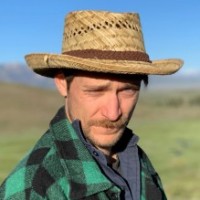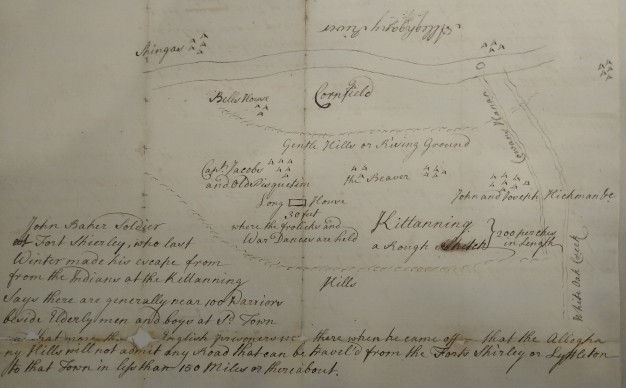Featured Fellow: Max Flomen (2020-2021 William S. Willis, Jr. Fellow)
Header Image: Scheme for an Expedition to Kittanning, John Armstrong, [1775]. Mss.Ms.Coll.200. APS.
Following a two-year COVID delay, it was an honor to visit the American Philosophical Society as one of the inaugural William Shedrick Willis, Jr. short-term research fellows in December 2022. Willis (1921-1983) was a pioneering historical anthropologist whose scholarship spanned a wide range of topics and disciplines. I first encountered Willis’s work in his 1963 article “Divide and Rule: Red, White, and Black in the Southeast.” During my time at the APS, it was a pleasure to peruse his lecture notes and correspondence with other scholars whom I admire, such as Herbert Aptheker and Fred Hoxie.
Like Willis, I am interested in practices among coalitions that defied ideas about race during the colonial period. I am likewise committed to exploring anthropology and history from a bottom-up perspective. My in-progress first book, Beyond Mountains: Marronage & Revolution in the Borderlands, 1500-1850 is a history of the self-liberation struggles in the Southwest & northern Mexico. It argues that Native peoples opposed colonial regimes along ideological and spatial axes in ways that convinced non-Indigenous peoples to support this counterculture. Drawing on archaeology, anthropology, and ethnohistory, the book follows the circulation of anti-imperial aspirations and practices among the Indigenous nations of western North America.
The source that first drew my attention to the APS’s collections was the Augustina Zuazua oral history of the Lipan Apache, one of the eastern Ndé peoples, which she recounted to anthropologist Harry Hoijer in the late 1930s. I knew this source contained a few lines about the first encounters between Comanche and Apache peoples in Texas and wanted to know more. The relationship between these two tribes has usually emphasized animosity, but I have identified multiple Indigenous and colonial sources that feature examples of cooperation. Zuazua’s account proved wide-ranging and, at times, difficult to interpret. However, after several readings and consulting some secondary literature and maps, her use of Lipan place names and geographical sensibility became clearer to me. An aspect of historical methodology that I strive towards is being able to imagine a person or a place from multiple perspectives. With enough context, primary sources allow you to see things differently.
After a few days of working with Zuazua’s oral history and other papers in the Hoijer Collection, I spent most of my remaining time examining letters and reports in the Miscellaneous Manuscripts Collection and the Sol Feinstone Collection of the American Revolution. I plan to use some of these materials in a second project focused on banditry during the American Revolution, and have already taken the opportunity to incorporate some of them into the classes I teach. The most exciting source I found in these collections was an annotated map entitled “Scheme for an Expedition to Kittanning.” The map of this mixed Delaware-Shawnee village was produced in 1755 based on the testimony of an escaped English captive, and then used by the Anglo-Pennsylvanian force that burned Kittanning in 1756. In a course on historical methods that I am teaching this spring, I used the map to demonstrate how maps can combine geographical and narrative elements.
I teach a class on the American Revolution and Philadelphia comes up a lot. Even then, I wasn’t fully prepared for the feeling of being in a historic city as I walked to the library each weekday. So beyond taking advantage of being right next to Independence Hall National Historic Site and the Museum of the American Revolution, my best advice is to make sure you see some of the rest of the city! There are many lovely neighborhoods to stroll through and the subway is easy to figure out. If you thrive on caffeine while you’re at the archive, I highly recommend Menagerie Coffee.


